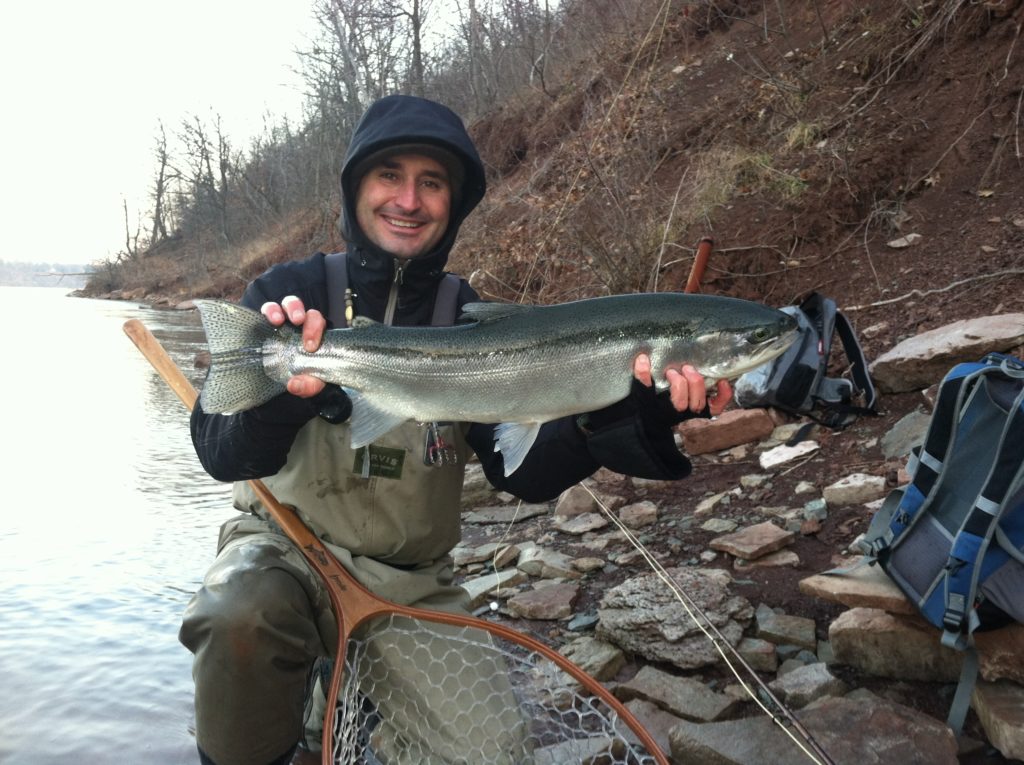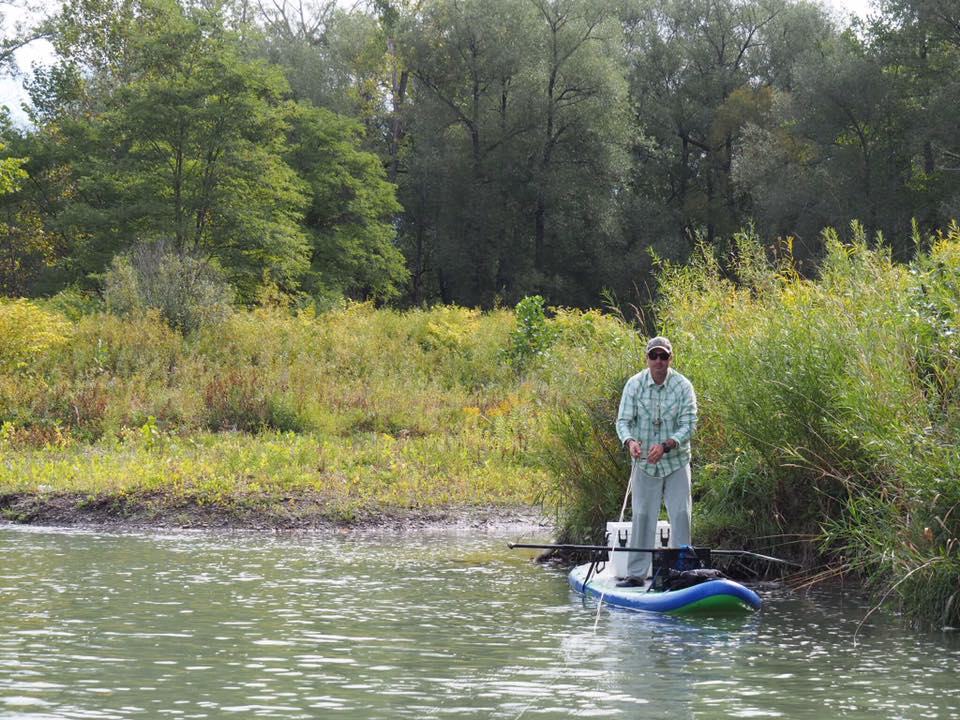In western NY, the air is cooling, we’re getting daily showers and days are shortening. For most folks, these are the familiar harbingers of fall. For the fly fishing crew at Adventure Bound, seasonal weather conditions herald the much-anticipated arrival of the annual steelhead migration; Lake Erie Steelhead are moving into local tributaries.
Understanding the life cycle of this fascinating fish will help anglers more easily catch it.
Steelhead lay their eggs in gravel-bottomed, fast-moving, well-oxygenated streams. As young smolt, living in the river, Steelhead begin their lives feeding on small aquatic invertebrates inhabiting their ecosystem. Some of these same mayfly larva and other small aquatic insects will continue to feed young fish as they migrate to the Great Lakes. During their lake-dwelling period, a steelhead’s diet consists mainly of baitfish, which require speed and cunning to catch.
Upon reaching adulthood, our Steelhead return to their native streams in western NY to spawn. When the fresh, dime bright, fish arrive into streams they still have aggressive lake-fish tendencies. They will attack streamers and flies that imitate the baitfish they’ve been feeding on for the majority of their lives. This is the exciting experience most Steelhead anglers are seeking. Strong, powerful runs up and down the stream are punctuated with huge leaps into the air. Every part of your rig will be tested as the drag of your reel screams, your rod bends from tip to butt and your leader gets dragged across the rocks.

As the steelhead spend more time in the rivers, they take on the appearance of their inland cousins, the rainbow trout. Once they’ve reached this stage they are at the peak of spawning season. Eggs and aquatic insects are commonly more available and they start feeding like trout. Successful anglers will use techniques such as dead drifting egg patterns and nymphs to tempt them into feeding.


